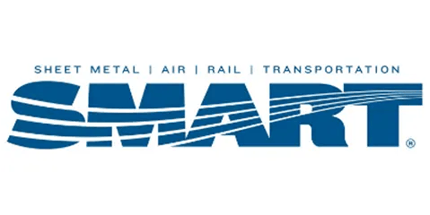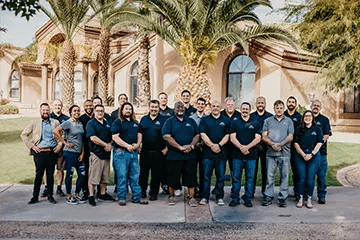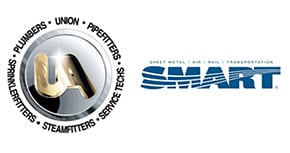
About Us
Established in 2016, in Silicon Valley
BIM Designs Incorporated was founded in San Francisco, California in 2016, with the goal of helping contractors and engineering firms expand their BIM Modeling, MEPF Detailing, and Engineering capacities. Since then, the company has expanded to Los Angeles and Phoenix, and now provides design and technical services to companies across the United States and Canada.
We are a service provider, helping VDC teams complete more projects and instantly scale productivity through staff augmentation and turnkey design solutions, without the financial and human resource challenges involved with directly hiring additional staff.
Throughout the engineering and detailing pre-construction process, our engineers, project managers, journeymen, and technicians collaborate with contractors to provide constructible models that are ready for fabrication and efficient installation.
Our Values

Quality Performance

Trust and Ethics

Solutions Driven
.png?width=84&height=83&name=value-innovation%20(1).png)
Innovation

Teamwork

Community Engagement

Ownership to Commitment

Diversity and Inclusion
Our Culture
BIM Designs, Inc. believes in giving our teams the freedom and flexibility to do the excellent work they've been trained to do as a tradesmen, while living the life that they want. We take pride in our community, and work to help the next generation of leaders in our field with the vision of merging construction with technology by exposing students to opportunities in the STEM fields. Through team-led workshops, internship opportunities, education, scholarships and community engagement programs, we empower the communities in which we live and serve.
Our Valued Clients
We collaborate with the most transformative general contractors, AEC firms, trade contractors, and developers, pushing the boundaries of preconstruction and BIM to maximize efficiency, decrease project costs, and enhance facilities management. The firm works on the most visible and interesting projects, such as YouTube's new headquarters, the Google Caribbean Campus, the Texas Rangers Stadium, Nvidia's Voyager building, Microsoft's Bellevue Campus Expansion, the Banner Health Ocotillo Medical Center, and many more.
Meet Our Team
Our Union Partnerships & Signatories


Frequently Asked Questions
Are BIM’s models constructible?
Yes, but the level of detail determines how models should be used in the field. For example, to fabricate based from a BIM model, you'll want the LOD to be 400 or above. All the different levels of development (LOD) are defined below, highlighting their potential uses. Understanding what the different levels of development will help you complete RFPs for your projects.
LOD 100 - Concept Design
The building 3D model is developed to represent the information on basic level. Thereby, only conceptual model creation is possible in this stage. Parameters like area, height, volume, location and orientation are defined.
LOD 200 - Schematic Design
General model, where elements are modeled with approximate quantities, size, shape, location and orientation. We can also attach non-geometric information to the model elements
LOD 300 - Detailed Design
Accurate modeling and shop drawings where elements are defined with specific assemblies, precise quantity, size, shape, location and orientation. Here, too, we can attach non-geometric information to the model elements
LOD 350 - Construction Documentation
It includes model details and elements that represent how building elements interface with various systems and other building elements with graphics and written definitions
LOD 400 - Fabrication & Assembly
Model elements are modeled as specific assemblies, with complete fabrication, assembly, and detailing information in addition to precise quantity, size, shape, location and orientation. Non-geometric information to the model elements can also be attached
LOD 500 - As-Built
Elements are modeled as constructed assemblies for Maintenance and operations. In addition to actual and accurate in size, shape, location, quantity, and orientation, non-geometric information is attached to modeled elements
How does BIM improve the coordination process?
We are more efficient during the clash detection process. We can take, on average of 6,500 clashes, group them down and assign them to individual MEP trades in a matter of hours. Clashes are assigned to responsible trades prior to coordination meetings. During coordination, the design team only review clashes that have not been cleared.
How does BIM price each project?
We price projects two ways, all in a proposal format: Lump sum Contract documents are provided and a single price is given for a list of deliverables. Cost Plus BIM Designs partners with the contractor to handle detailing and/or engineering on a per-project basis at our cost plus 30%.
How long does the estimate process take?
On average, estimates take 72 hours to complete.
How much should be set aside for detailing?
15-20% of man hours for a project. A detailer supports 10-12 field personnel. Supplying them everything they need from cut lengths of pipe, POC depths to Point Layout, hanger elevations, rod lengths and explanation of drawings.
How will BIM communicate with the field?
Our Lead detailers will communicate directly with General Foreman to go over any questions during the installation process.
The building is already existing, can BIM help?
We use 3D scanning technology to produce a BIM models used during coordination. We will then populate the model per the contract documents provided or created from our engineering team. The final product will be ready for fabrication or installation. A clash free model coordinated around other existing trades and structure is also produced.
What if BIM Designs is needed onsite?
BIM will come out to any project site to measure, verify and review field conditions. Added costs apply.
What software do we use?
AutoCAD Fabrication MEP, Navisworks, Revit, C4R Revit Collaboration, ProCore, BlueBeam, SharePoint.




